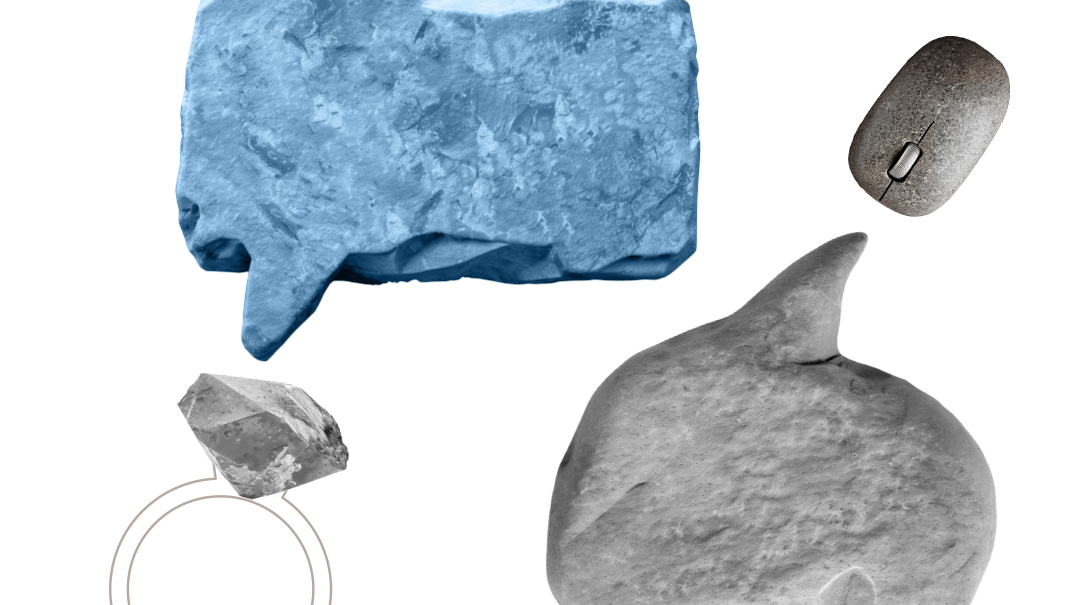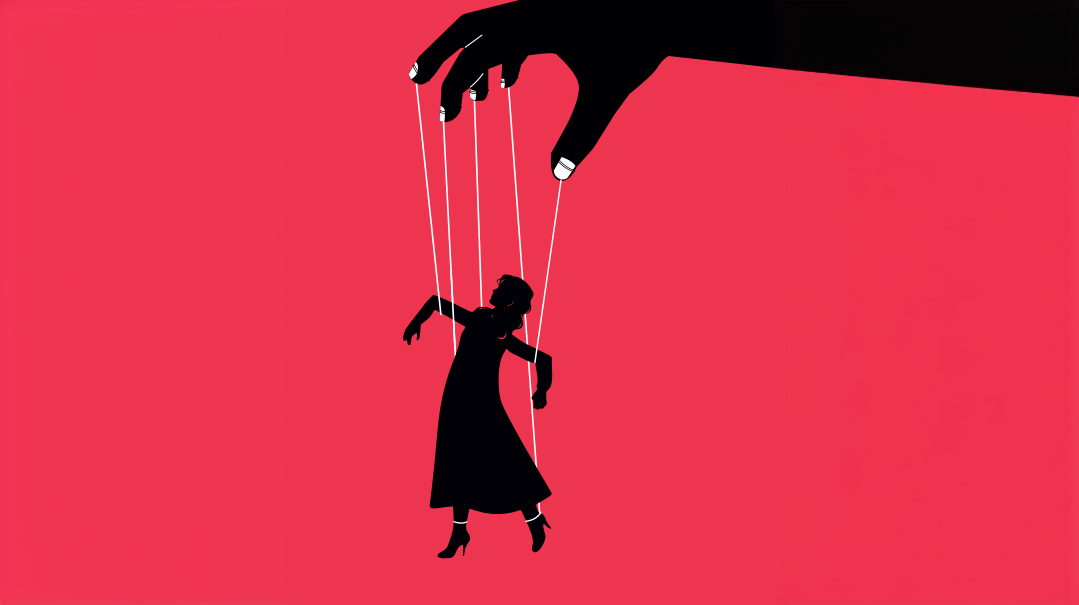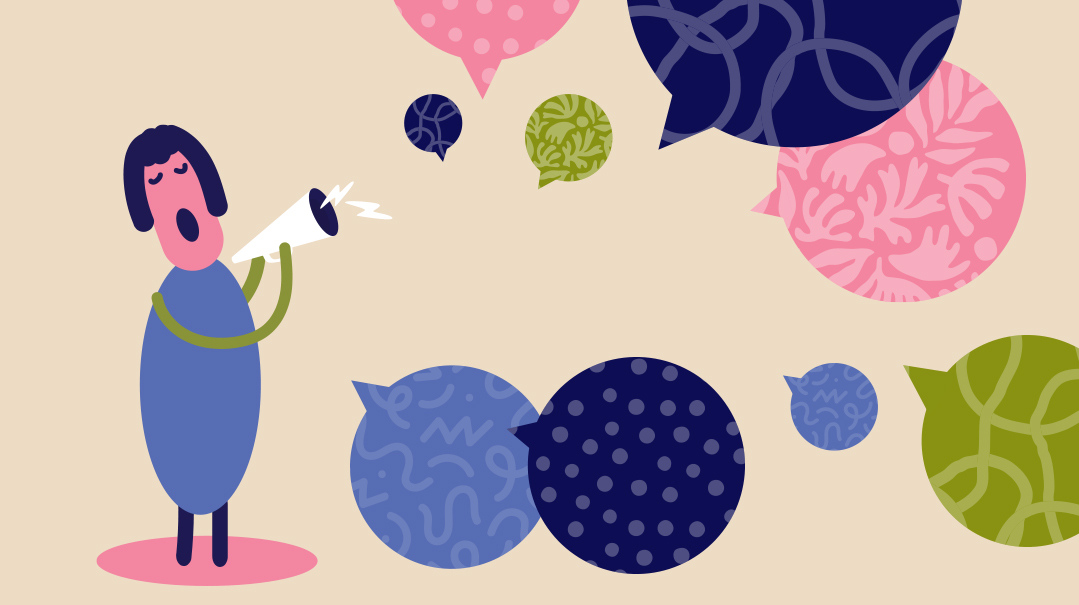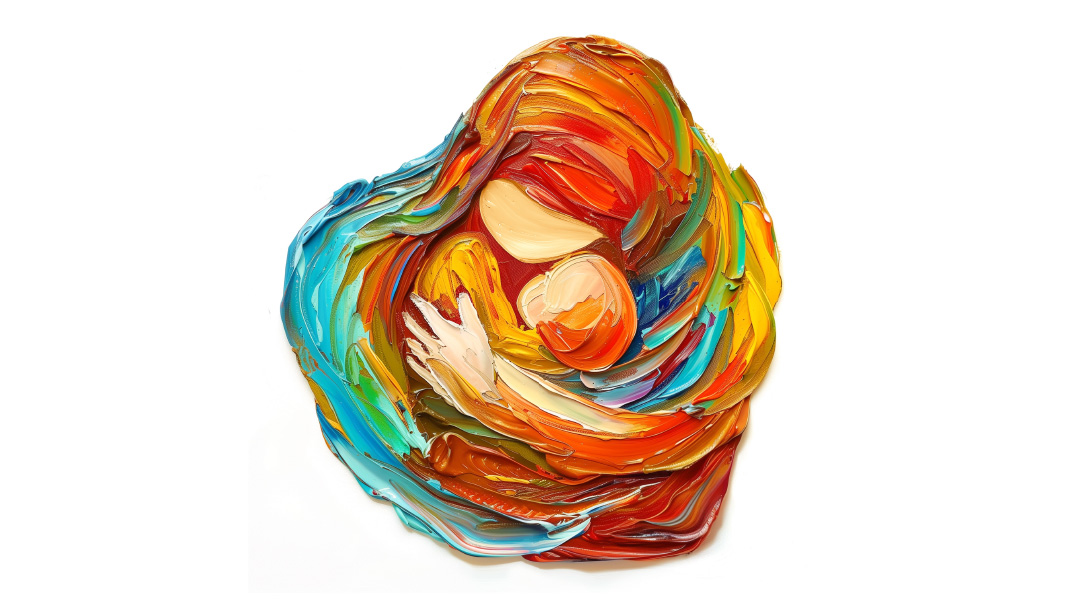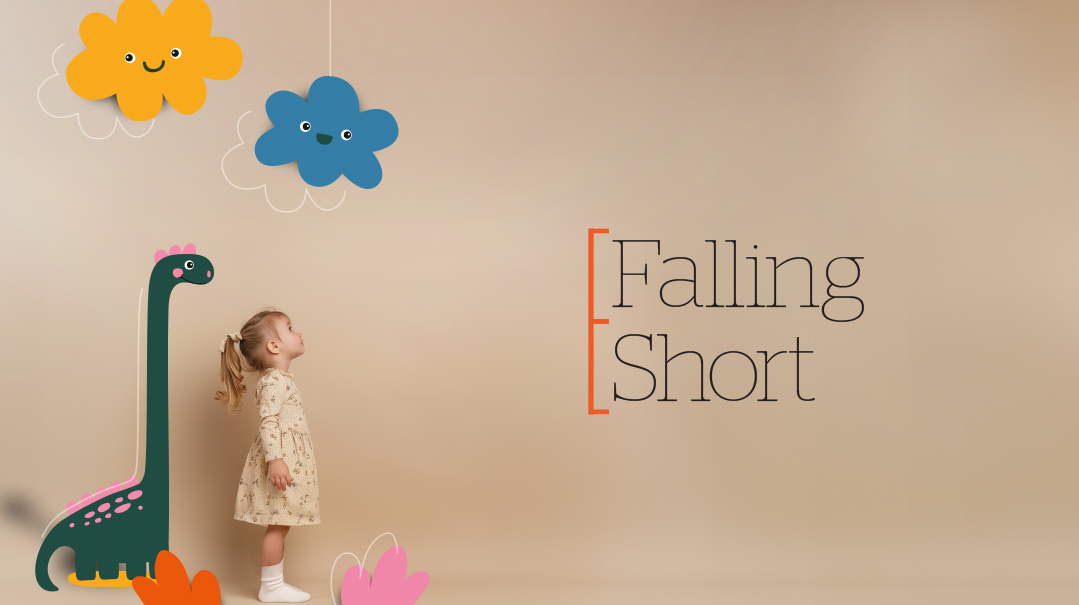Too Good to Be True

When positivity masks pain, it can come at a heavy price

Alpine sliding down the longest track in Europe sounded incredibly exciting. So when I was lucky enough to spend a few days in Switzerland with my siblings a few summers ago, and they suggested Alpine sliding, I was all in.
I stood on top of the mountain, the overpriced, yellow souvenir sunglasses I’d bought to protect my eyes from the sun sliding off my nose, and looked down as people got in their cars and zoomed down.
Then it was our turn.
I got in, pressed on the pedal, and haltingly inched along the track. I was petrified.
My brother, riding in the car behind me, felt responsible to make sure I didn’t hold up everyone on the track, and kept yelling, “Chani, go, go!” With no choice, I went.
There I was, going faster than my comfort level dictated, when the track simply became vertical. The only way out is through, I told myself, my heart in my stomach.
A few heart-stopping minutes later, I was finally safely at the bottom. I decided I’d enjoy the Swiss Alps more with my feet firmly on the ground.
“The only way out is through” is a maxim that holds true for many situations in life, some decidedly less glamorous and more painful than vacationing in the Alps. But what happens when we think we can get around it? What happens when we prefer putting on rose-colored glasses and looking past the darker parts of life? Here, we explore this phenomenon of toxic positivity, examine the toll it exacts, and suggest healthier alternatives.
No Pain Allowed
For the past few years, Dina’s always gone to the annual Yad’V’chesed Chinese auction with her neighbor Gitty. When the ads for this year’s event come out, Dina calls Gitty to confirm. But Gitty mumbles something about not being sure about her plans, and excuses herself to attend to a burning cake. Dina hangs up confused, resigned to attending the auction alone.
When she leaves the hall after a short time — being there alone just isn’t much fun — she sees Gitty coming in with Raizy, a colleague of Gitty’s. Dina feels a twinge of hurt. Did Gitty not want to go with her? Why did she prefer Raizy’s company?
Quickly, she puts a stop to her racing thoughts. I’m a big girl. I have three kids at home! Why would I care if Gitty wants to spend time with Raizy? She prides herself on her maturity, on not letting herself be petty.
Shevi’s daydreams before the birth of her oldest featured frilly bassinets and tiny velour stretchies; she envisions herself curled up in a rocking chair, feeding her baby. But when her son was born with a cleft lip, she was swept into a whirlpool of doctors’ consultations, endless speech therapy, and agonizingly long feedings. The first few hours after the birth found her numb, but then she pulled herself together.
“It’s okay,” she told her mother, her mother-in-law, and all her nervous visitors. “It’s not life threatening, it’s treatable, and he’s going to be fine. There are so many birth defects that are incurable. We got away easy.”
And she believed every word she said. But a few months later, when she was taking Advil every day for headaches, her husband suggested she do a blood work-up. It came back fine. Yet the headaches continued.
“Toxic positivity” refers to the relatively widespread phenomenon of people, like our hypothetical Dina and Shevi, choosing to embrace uncomfortable or even painful situations as good, thereby bypassing the long, often painful journey necessary to process difficult emotions.
In the secular world, it can present simply as positivity, while in the frum world, it will often disguise itself as piety. Gam zu l’tovah! It’s all for the best! We jump on these mantras, attempting to quash what we really feel, forgetting that these ideas are only meant to come into play at a later point.
After we’ve faced the pain, we can give ourselves over — sadness, uncomfortable emotions and all — to the One Who knows what’s best for us. But grabbing on to these concepts as mantras from the get-go causes us to skip the process of experiencing the feelings in the first place. Mrs. Sara Eisemann, LCSW and Family First columnist, sums it up: “So many of the mitzvos are about rising above our feelings, and we mistake them to be about negating our feelings.”
Spirituality Substitute
Toxic positivity isn’t necessarily easy to come by. It can feel challenging, heroic even, to insist we aren’t having difficulty with any of our relationships, or aren’t upset by a crisis we’re dealing with. As Sara says, “People doing toxic positivity usually feel pretty good about it, very worked on.”
But hard work isn’t the sole barometer of doing the right thing; the more crucial question is if we’re investing the work in the right direction. What does the Torah tell us about toxic positivity? Is it a Torah ideal to see the world solely through rose-colored glasses?
The midrash in Bereishis Rabbah, Vayeira 56, describes the dichotomy of Avraham Avinu’s feelings when bringing Yitzchak to the Akeidah. “And tears dripped from his eyes into Yitzchak’s eyes from his fatherly compassion,” and, “even so, his heart was happy to do the Will of his Maker.” Avraham Avinu had no doubt he was doing the right thing; he rejoiced in doing the right thing! But that didn’t stop him from feeling the pain of sacrificing his son.
Mrs. Dina Schoonmaker, a veteran seminary teacher who runs an interactive mussar vaad via teleconference focused on self-development, quotes the pasuk in Tehillim 121: “Esa einai el heharim, mei’ayin yavo ezri, ezri mei’im Hashem — I lift my eyes to the mountains, where will my help come from, my help comes from Hashem.” Dovid Hamelech, who endured so much, gives voice to the suffering, the pain, the bewilderment. “Where will my help come from?”
It’s only after voicing the pain that he moves on to reinforce his belief, “ezri me’im Hashem.” Hashem will help. Greatness comes from being willing to feel the pain and isolation, and from that place, turning to Him for help.
Mrs. Schoonmaker brings another source from the Chazon Ish’s Emunah u’Bitachon, where he says that the purpose of bitachon is l’hachlimo, l’rapoto, u’l’nahalo. “If bitachon has to heal, rehabilitate, and cure,” she says, “something is wrong that needs to be cured. Clearly the Chazon Ish also felt that bitachon was responding to… the processing of pain.”
Rav Yitzchak Berkovits, rosh yeshivah of Aish HaTorah and rosh kollel of the Jerusalem Kollel, says this is a widespread issue today. “One of the biggest problems I see nowadays is that people aren’t willing to feel the pain of a tzarah,” he says. “The Torah wants a person to feel the pain, suffer from the pain, and then take that and make something out of it.”
Sara Eisemann quotes the pasuk from Ashrei we say every day. “’Karov Hashem l’chol kor’av, l’chol asher yikre’uhu b’emes, Hashem is close to all who call Him, to all who call Him in truth.’ If you want to be close to Hashem, you have to call Him from a place of truth. And the true connection we make with HaKadosh Baruch Hu is when we’re willing to be in the authentic place of our pain. The calling out we do from those trenches, that’s what connects us to Hashem.”
Of course, the Torah wants us to be happy, to be positive, to view others favorably. We aren’t trying to do away with positivity campaigns, or encourage widespread complaining and anger. But the destination of genuine positivity, gratefulness, and acceptance can only be reached by walking the path of being willing to face our true feelings first.
The Price
Toxic positivity exacts a toll on us. Whether we resort to it because we think it’s the right way to be, or because of fear of facing feelings that seem too painful to deal with, we pay a price. Toxic positivity consumes our energy while taking us on a path that leads nowhere.
What happens when a person chronically denies her emotions? The fact we deny that a situation is stressful or sad doesn’t make it not so, and the body can’t hold on to chronic stress indefinitely. “If stress isn’t processed in a healthy, aware way, the body keeps score,” Sara says, “and it will come out as either physical illness, somatic situations, or passive-aggressive behavior.”
While physical symptoms are part of the picture, the main casualty of toxic positivity is connection, with ourselves, others, and Hashem. Our connection with our own selves is the first to take a hit, and the reason is obvious. When we feel sad, angry, or lonely, but we insist on telling ourselves that we’re really happy, satisfied, and content, we have an obvious recipe for disconnect.
And it doesn’t stop there.
As humans, Sara says, we have a desperate, basic need for intimacy. “Toxic positivity is the biggest barrier to intimacy. Because true intimacy requires vulnerability, and toxic positivity is the greatest deflection to vulnerability.”
What is it about toxic positivity that repels connections? Think about what you’d do if you felt hurt or vulnerable, Sara explains. Would you choose to confide in someone who always insist that everything is wonderful, even when it isn’t? Of course not. When someone gives off the message that everything is wonderful, they convey to us that they aren’t open to accepting the less photogenic parts of those around them, and we don’t feel safe to share our weaknesses and vulnerabilities with them. As humans, we crave unconditional love, and someone who sticks to the toxic positivity script can’t provide that.
On the spiritual level as well, how can we have an authentic connection with Hashem if we’re not willing to tell Him what we’re really feeling? When we allow ourselves to be real and authentic with HaKadosh Baruch Hu, we gift ourselves the experience of bringing ourselves to Him as we are, and seeing how He loves us, difficult emotions and all.
Try Tragic Optimism
We have a strong case against toxic positivity, but what’s the alternative?
“Tragic optimism” is a term credited to psychologist and Holocaust survivor Dr. Victor Frankl. Rather than denying the suffering that’s inseparable from the human condition, he advocates acknowledging the pain that surrounds us and trying to grow from there. If we do the work and are willing to walk through dark, narrow paths, when we finally reach the light, we may be surprised to find the sun shining brighter than before.
In her mussar vaadim, Mrs. Schoonmaker often talks about the primary response and the secondary response. When confronted with pain or hurt, the primary response for most of us will be fear, anger, a sense of betrayal, or a combination of these feelings. Toxic positivity would have us suppress those feelings immediately. It’s not okay to be angry at Hashem! It’s pathetic to feel so hurt by how she spoke to you! But denying our feelings isn’t going to make them go away.
What we’re aiming for is a secondary response coming from a place of emunah and positivity. Hashem, this really hurts, but I know You’re doing this for my good. Or, of course I feel hurt by how she spoke to me. But we’ve always gotten along, and this is out of character for her. I can validate my feelings of pain while assuming something must be going on to have made her lash out at me.
It’s in the journey from the primary response to the secondary response that our life’s work lies, and it’s here we need to draw on wellsprings of faith and compassion, for self and others, to bring ourselves to that secondary response from a real, authentic place. The reflexive toxic positivity response may sound similar to another person’s secondary response, but it’s the work that went into the secondary response that makes it real, lets us own it.
Tragic optimism strengthens our connection on all three fronts: with ourselves, others, and Hashem. When we deny what we’re feeling, we may be protecting ourselves from pain, but we also block ourselves from feeling the joy life has to offer. When we’re no longer fighting a battle between heart and mind, we’re able to experience in a deeper way than before how much we love our children, how beautiful a blue sky is, and even how happy we are to be alive.
Paradoxically, we can be happier because we’re sadder.
The self-compassion that’s so essential to tragic optimism also naturally spills over to our relationships with others. When we’ve learned to extend acceptance of our imperfections to ourselves, we can extend it to others.
We don’t need to think of convoluted scenarios to explain why someone may have acted the way she did. Our intuitive knowledge that everyone is fighting a battle we cannot see helps us to see others through the sympathetic lenses we see ourselves through. And our willingness to look pain in the eye, and not simply deny it, makes others able to confide their pain in us, knowing we can hold it safely.
Most importantly, tragic optimism can completely transform our relationship with HaKadosh Baruch Hu. Sara shares a beautiful vort from Rabbi Y.Y. Jacobson. He quotes the famous Rashi on parshas Vayeishev. “Bikesh Yaakov leishev b’shalvah, kaftzah alav rogzo shel Yosef.” Rabbi Jacobson asks: What did Yaakov want already? A few years of quiet? He was 100 years old! He wanted some tranquility, so Hashem’s response was to bring him the huge trial of losing his son?
He answers with a beautiful explanation from the Lubavitcher Rebbe. Yes! Because Yaakov wanted shalvah, tranquility, that’s why Hashem gave him the nisayon of Yosef. We all have preconceived notions of what tranquility looks like. A week at the beach with a good book? Perhaps time to learn undisturbed? But Hashem, who created us and knows our deepest desires, gave Yaakov the kind of shalvah He knows is the real deal.
“…[T]here’s a tranquility that’s above all that. And that’s the tranquility when you touch infinity. When you stretch yourself to a point that you didn’t know existed, when you get to the point of a mi yodeia, who knows why Hashem does what He does, in that moment you reach a level of transcendence that wasn’t available to you before you had this nisayon.”
Nisyonos hurt. We don’t ask for them. But when they inevitably come, if we allow ourselves to look the pain in the eye, to grow from it, we can reach heights we never could have scaled before. And we may be surprised to discover how very beautiful the view is from there.
Don’t Do It Alone
Tragic optimism has a lot to offer. But the road can be rocky. When a woman decides to make that brave move, and leave her comfort zone of “it’s all good,” she can find herself confronting a painful reality, and it can hurt. A lot. The good news is that there are techniques and tools we can access that can help us get to the other side more easily.
Yocheved Rottenberg, a facilitator of international therapeutic writing workshops and the author of Write Your Way Home, is a passionate believer in the power of journaling to help release pent-up feelings and bring women to a place of greater emotional health. She shares an exercise for helping us feel what’s really going on inside.
- Set a timer for five minutes. Ask yourself, “What is going on for me right now?” and just start writing. Don’t worry about if what you’re writing makes sense, or if you’re writing the right thing. Whatever comes out of your pen (or keyboard) is perfect.
- When the timer rings, read over your writing. Then, reset your timer for two minutes and write, “What I mean to say is…”
- Write until the timer rings and then set it again for two minutes and write, “What I really, really mean to say is…”
- Read over all your writing and then write, “As I read over my writing, I feel… “ (One word only.)
- Read that sentence and sit with it for a minute. Give yourself permission to accept that you feel whatever emotion emerged.
- You can write about that feeling, or you can put your notebook away and begin the process again another time.
For those looking for a shorter exercise, she recommends another, shorter journal prompt: If I had to choose one difficult thing in my life, what would it be?
Jackie Vittori-Birnbaum, clinical hypnotherapist MNCH and Laughter Exercise Leader, weighs in here too. She explains that the key to allowing ourselves to deal with painful emotions is trusting that our minds and bodies can handle whatever discomfort may be involved. She shares an exercise women can use to move from a place of stress and negativity to a more positive space.
Find yourself a quiet place, and put on calming music. Close your eyes and visualize a warm, soothing light filling the room. Let the light radiate through you, from the top of your head working downward, carrying away pain and stress as it works its way down. Bring in compassionate self-talk as you do this.
Try this for ten minutes at a time, working your way up to twenty minutes. End the exercise by standing with both feet flat on the ground. Feel how the floor is holding you up. Tell yourself, “I’m grounded, safe, and supported at all times.”
Let’s not underestimate the power we each hold in our ability to be there for those around us.
“You can’t do this work alone,” Sara says. “Whether it’s with a mentor, a therapist, groups of women getting together…” We need support as we do our best to cope with the boulders we stumble over on our individual journeys. When we can give another the sense that we can hold their difficult emotions, we empower them to face the pain.
Life’s curves can sometimes leave us wishing we could just close our eyes and wake up when the ride is over. But when we’re willing to keep our eyes open, let ourselves experience the fear of heart-stopping drops and the exhilaration of the wind rushing past, we can learn to relax — and even enjoy the ride.
Permission for the Process
Toxic positivity filters down to our chinuch approach. Sara Eisemann shares an example of a common exchange parents might have with their children:
“Shlomo, be a tzaddik and share your toys with Elchanan.”
Sound familiar?
Two-year-old Elchanan is doing everything he can to get his hands on four-year-old Shlomo’s new fire truck. Now, we’d never force Shlomo to share, but encouraging him to be a tzaddik seems to many of us the right way to go.
Let’s explore what this feels like for Shlomo. What message have we inadvertently planted in his young mind? In Shlomo’s black-and-white world, if he won’t be a tzaddik and share, he’ll be a rasha! Ouch! So he’s stuck between a rock and a hard place, choosing either to resentfully share his toy, or to refuse and bear the blow to his budding self-image.
Imagine how much we could help Shlomo if we were honest with him.
“Shlomo, sweetie, I know it’s so hard to share your new truck. If you decide you want to let Elchanan use it for a short time, you would make him so happy. But if you aren’t ready, that’s fine.”
When we frame it like this, Shlomo has the choice to share or not, and whatever choice he makes will leave his self-esteem intact. He may choose not to, and leave us to deal with the collateral damage of a screaming Elchanan, but if and when he does choose to share, it’ll be because he really wants to. And more importantly, he’ll have learned that he’s loved and valued not only if he recites the lines of a pre-determined script, but simply for who he is.
Engage in the Battle
A letter from Rav Hutner to a talmid sheds light on the Torah’s attitude to growth and perfection, in ourselves and others. In the original letter the questioner is bemoaning his spiritual state. Rav Hutner responds emphatically:
“This phenomenon plagues us, that when we study the greatness of our leaders, we look at the final picture. We speak of their shleimus, and skip the inner battle that raged within. The impression we give is that they were born whole and complete.
“We all think of the shemiras halashon of the Chofetz Chaim, but who knows all the battles, fights, stumbles, falls, and reverses that he had on the way. Therefore, when someone falls, he thinks he’s in the wrong place.
“The wisest of all men said ‘Sheva yipol tzaddik v’kam.’ The intention is that although he fell many times, nonetheless he stood up. However wise people understand the intent is that the essence of the tzaddik’s rising is through his seven falls.
“ ‘Vayar es kol asher asah, v’hinei tov me’od.’ [The midrash says] tov refers to the yetzer hatov and me’od refers to the yetzer hara.
“Had you written how everything is good without any falls, it would be tov. But now [that you write about your struggles], it’s tov me’od. I beg of you, do not picture our gedolim in a way that they and their yetzer hatov are like one. Rather picture for yourself the greatness of our gedolim engaged in a fierce battle, with all the possible inclinations toward shiflus…
“When you feel the yetzer hara raging within you, know that with this you resemble the gedolim far more than when you are found in a state of menuchah.”
(Originally featured in Family First, Issue 779)
Oops! We could not locate your form.
